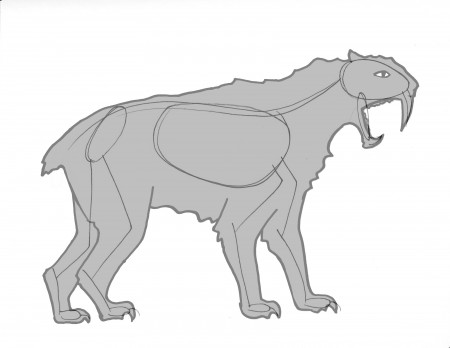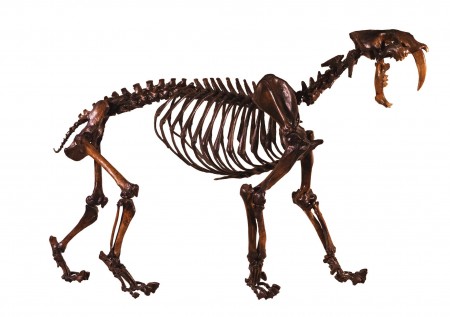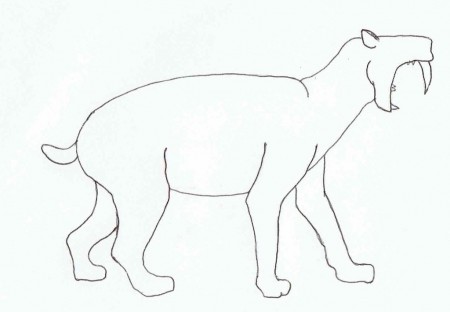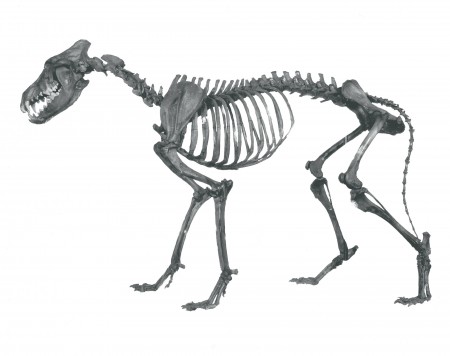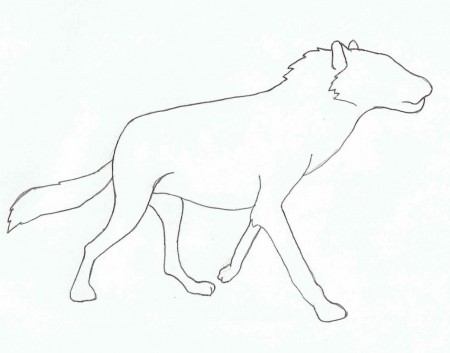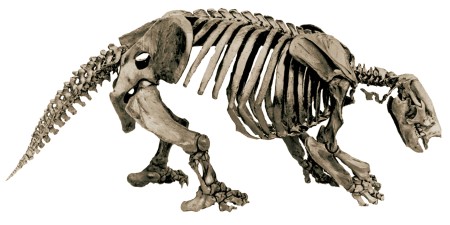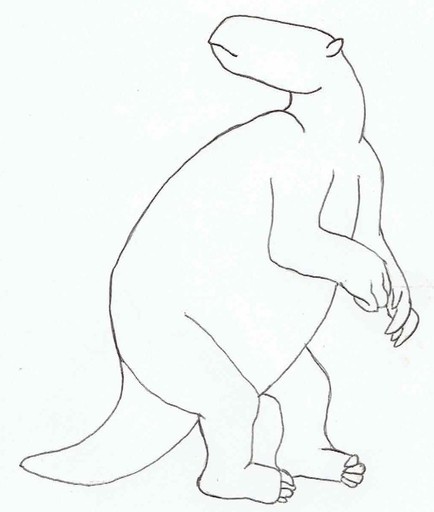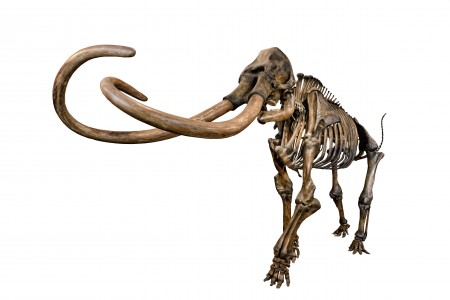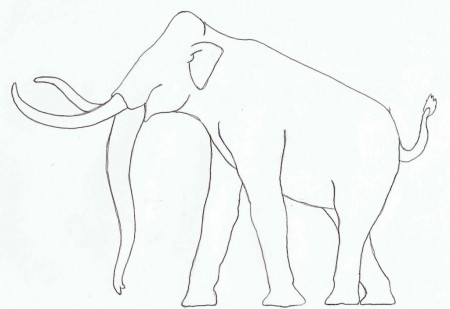DIY Paleoart

SUGGESTED FOR ELEMENTARY, MIDDLE, AND HIGH SCHOOL STUDENTS
How do we know what a saber-toothed cat looked like? Short answer? We don’t! At La Brea Tar Pits, we only find the bones of ancient animals. But by understanding how ancient or extinct animals looked, scientists can better understand how they fit into the world around them.
When art and science work together to create an image of prehistoric life, it’s called paleoart. Paleoartists study living animals and work with scientists to develop the best examples of these animals.
Ready to try it for yourself? Will your saber-toothed cat have stripes or spots? Neither? What color coat will your dire wolf have? Follow the steps below, then share your creations with us! Use the hashtags #ArtPits and #MindBlownLA
MATERIALS
- Piece of paper
- Writing utensils (such as pencils, pens, markers, colored pencils, etc.)
INSTRUCTIONS
1. Pick your animal.
Find a skeleton of a prehistoric animal (or use the example images below) and print it. If you don’t have a printer, practice creating a simple line drawing to give you the general shape of the skeleton, similar to the below sketch. Can’t decide on an animal? Check out our collections page to see a full list of all the animals found at La Brea Tar Pits. You can choose from mammals, invertebrates, fish, birds, amphibians, reptiles, and even flora!
2. Outline your skeleton.
Create an outline around the skeleton. Be sure to leave space for all the soft tissue (fat, muscle, etc.) and fur coat, feathers, or skin.
3. Color your animal!
What sort of pattern will your animal’s fur have? Why? Compare your animal to similar species (you can use both extinct and extant relatives) for inspiration on the animal's fleshed-out image. Then, color it in!
Tar Pits Examples
Smilodon Fatalis (Saber-toothed cat)
Smilodon fatalis, or saber-toothed cat, is our California state fossil. Smilodon is the second most common large mammal found at the La Brea Tar Pits - excavators have uncovered over 2,000 saber-toothed cats here!
Canis Dirus (Dire Wolf)
These infamous pack hunters actually existed during the Ice Age. They are the most commonly found mammal dug up at the Tar Pits, with over 5,000 in our collection!
Paramylodon harlani (Harlan’s Ground Sloth)
Giant ground sloths roamed Ice Age L.A. from nearly 100,000 to 11,000 years ago. Three different types of sloths have been found right here at the Tar Pits, one of which is Harlan’s Ground Sloth. Weighing up to 3,000 pounds, it is the largest and most common one.
Mammuthus Colombi (Columbian Mammoth)
The largest mammals discovered here were the enormous Columbian mammoths. They are very distinctive by their size and their signature curved, long tusks. One of our major finds has been “Zed” a near-complete adult Columbian mammoth.
Glossary
Asphalt - A highly viscous form of petroleum. It differs from tar, as tar is a man-made substance made by distilling organic material.
Ecosystem - A large community of living organisms (plants, animals, and microbes) in a particular area.
Extant - A species, family, or any larger group of organisms that still has living members.
Extinct - A species, family, or any larger group of organisms that has no living members.
Fossil - Any evidence of life over 10,000 years old, from hard tissues (bones, teeth, claws) to trace fossils (footprints, feces, skin impressions)
Paleoart - The field of art concerning the reconstruction of prehistoric plants and animals. Artists often work alongside paleontologists to create the most accurate representations.
Additional Resources Recommended for Families
Videos
PaleoArt: New Visions of Ancient Creatures (Science Friday)
Stephanie Abramowicz explains creating illustrations of dinosaurs (Technovation)
Meet Wikipedia's Resident Paleoartists (Great Big Story)
Paleoart: Painting the Land Before Time (The Brain Scoop)
Articles
How to Draw Dinosaurs for a Living (Science Friday)
5 Things You Didn't Know About Paleoart (How Stuff Works)

